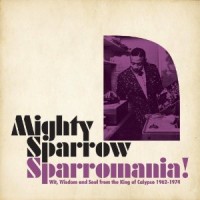The following report, written by Vinette K. Pryce, was published in Caribbean Life News on May 9, 2012.
The second annual staging of a cultural assembly billed “Kingston Pon Di River” reintroduced an African aspect of Jamaica’s culture previously ignored or shunned at mainstream celebrations and heritage festivals.
The literary, arts and music festival held at Boone Hall last week featured The St. Thomas Revival Band, a group that were neither promoted nor announced on the billing.
Introduced by Aloun Ndombet-Assamba, the island’s high commissioner to England who emceed an evening offering of drumming featuring talents from Cuba and Jamaica, the added attraction marshaled tourists, visitors and nationals to experience what is usually a private religious ceremony practiced to pay homage to Africa, the regarded Holy Land of the Pocomania sect.
Following the instrumental feast, a procession of men, women and children dressed in red, white and blue emerged from the dark, grassy, hillside setting into the light of the moon where awe-struck patrons watched with curiosity.
With heads tied to fashion a turban, their red, plaid, bandana fabric represented the national cloth and signified a unity between religion and country.
The members of the group seemed entranced by their music as they walked to a white tent where a long table prepared an altar and became the central focus for what ensued as a spirited, ritualistic, revival ceremony.
“The Indians share their culture; the Chinese, Syrians and Jews too, we as Jamaicans should embrace our total heritage,” Dollis Campbell, one of the three promoters representing Dynamic Event Services said.
It was at her urging that the Yallahs-based church group found a welcoming audience at the riverside, weekend fest.
Far from somber, the serious worshippers proved to be missionaries of their faith, ancestry and country.
Without engaging recruitment tactics to patrons, they impressed a number of guests who remained riveted until the midnight end of the ceremony.
Dressed similarly to a Roman Catholic Pope, his head to feet ceremonial dress distinguished him from his congregation and other religious believers in the group.
“People think we are about obeah…but we light candles, sing and praise our Lord…that’s all we do,” Pastor Jonathan Williams said.
To see the way he sprayed mouthfuls of water or liquor into the air can only be described as artistic and perhaps akin to rituals performed in Brazil or Haiti.
He seemed to direct the motions of the lively, musical revivalists who segued from each song singing the gospel of their faith.
They employed the tenets of the festival to deliver literature, art and music to an audience perhaps un-familiar with their mode of worship.
Allegedly rooted in West African traditions, revivalist culture is mostly regarded as an underground religious rite practiced by a segment of the society known as Pocomanianians.
The authentic Afro-Christian religious folk form evolved during the eighteenth to nineteenth century and was regarded in traditional religious circles as a vehicle of rebellion in colonial times. Pocomania reportedly emerged during the 1860s in churches which exuberantly fused African and Protestant performance styles, images, and traditions.
The ritual meetings involve prayers, dances, and rhythmic drumming.
Participants often go into a trance.
However, on the Saturday night that celebrated the 140th anniversary of the capital, Caribbean city, an abbreviated ritual minus magic offered a glimpse into Jamaica’s African ancestral tradition.
A long table filled with fruits of every kind, Duck bread (special ceremonial dough) colored candles, flowers, and beverages formed the central focus of attention.
Ceremoniously staged to thank the ancestors for granting powers of healing and life, the gifts to the spirits are later shared among a congregation.
Each colored candle allegedly represented a significant aspect of the ceremony.
For first-time witnesses it was the candles that captivated the most attention when the preacher indicated that when lit, they could be the vehicle to goodwill and hoped-for wishes.
Individuals voluntarily lit particular candles they hoped will provide fulfillments the pastor allegedly relayed to ancestors. A number of prior skeptics and cynics allayed their fears and proceeded to the altar in order to seek positive enticements.
“This is my first time seeing this but I am totally impressed and proud of my country and culture. I am happy I came, I have learnt a great deal,” Norma Davis said after the ceremony.
With a band of musicians constantly fueling infectious sounds, the entire audience joined the revelry and embraced the nation’s cultural heritage.
Janet Silvera, Dollis Campbell, and Millicent Lynch are the three founders of DES credited for enlightening the sophisticated, elite patronage to their milestone anniversary feature and event championing the historic dateline.
Perhaps, the highlight of the festival, this presentation is being hailed with appreciation by nationals and visitors alike.
Kingston has had its allure but until recently few visitors could boast the privilege of sitting up close to witness the legacy and rich, African tradition still practiced by revivalists in modern day Jamaica.
For the original report: Kingston festival attracts visitors and locals alike • Caribbean Life.


